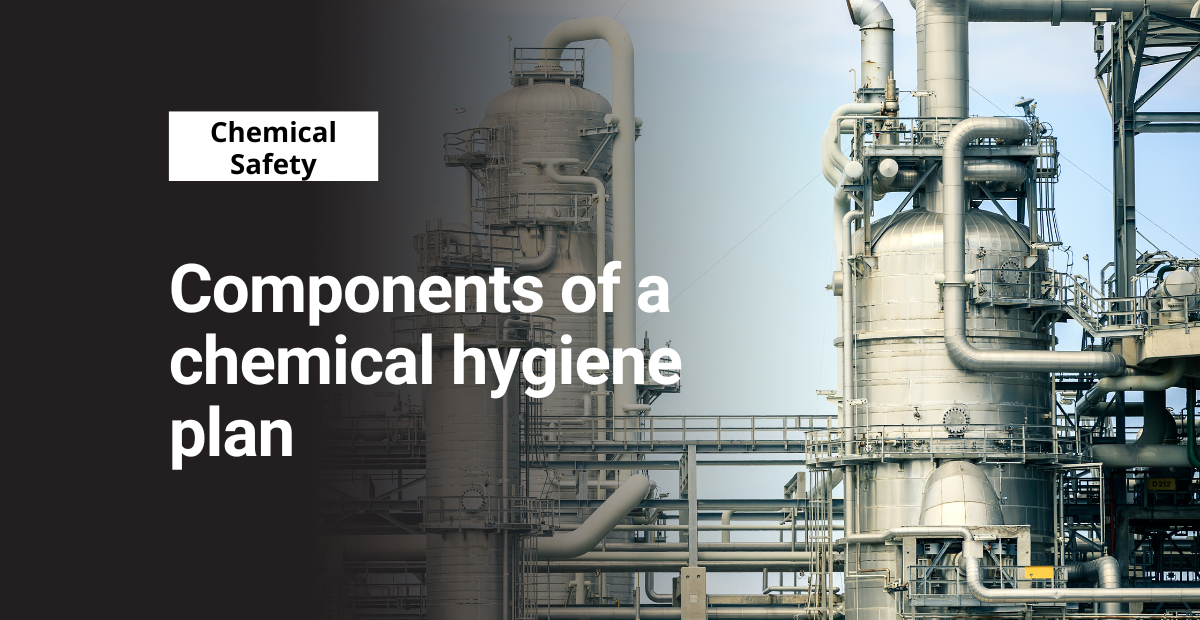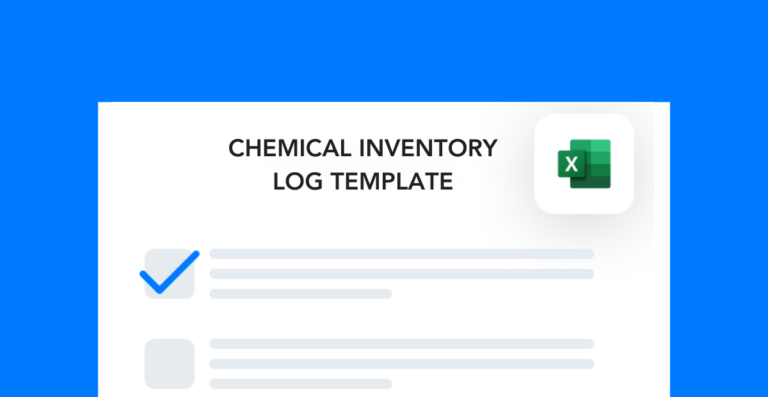A chemical hygiene plan (CHP) is a requirement of the Laboratory Standard. This is a reference to the OSHA standard titled “Occupational exposure to hazardous chemicals in laboratories” (29 CFR 1910.1450).
It establishes safety and health considerations for laboratories. These laboratories are where workers handle hazardous chemicals in limited amounts and on short timescales. In addition, procedures and chemicals may change often.
The standard applies to employers that engage in “laboratory use of hazardous chemicals” in a non-production environment. Although, it does also include quality control labs that may be a part of production operations.
Free template!
Use this free template to compile an inventory log of all the chemicals you have in your facility.
Purpose of a chemical hygiene plan
The laboratory’s employer must designate a Chemical Hygiene Officer (CHO) who is responsible for implementing the CHP. The CHO is a person “qualified by training or experience” who provides technical guidance on the development of the CHP. For some employers, the CHO may be the EHS manager. However, in other cases, these roles may be separate.
A CHP is a formal, written plan. It outlines the policies and procedures used to ensure the safety of laboratory workers. The Laboratory Standard does outline the required components. We will review and discuss next.
Chemical hygiene plan sections
There are several required components you should consider when making a CHP. Emphasis on exposure risk and the necessary type of controls to limit those exposures should be a high priority.
A CHP is all about providing a structured and controlled plan. This plan ensures a safe and healthy environment for laboratory workers. Accordingly, software solutions are handy to provide the needed infrastructure for managing these processes.
Chemical hygiene committee
The CHP should include the designation of the CHO who’s responsible for implementing the CHP. If appropriate or necessary, include information about the chemical hygiene committee too.
Safety controls to reduce exposure
A CHP must outline the criteria to determine appropriate control measures. It should include the implementation of these controls to reduce employee exposure.
You will need to consider engineering controls. This includes chemical fume hoods and ventilation systems, personal protective equipment (PPE), and hygiene practices.
If the lab handles extremely hazardous chemicals, such as hydrofluoric acid, include control measures for them in your CHP.
Standard operating procedures (SOP)
Each activity that requires the use of hazardous chemicals must have a SOP in place. The SOP should outline how to conduct the lab task safely. For this step, you will want to understand:
- Amount of the chemicals that workers use
- Potential exposure routes
- Hazardous waste disposal protocols
Your chemical hygiene plan should describe the necessary safety controls for each task. Examples of these controls include: use of chemical fume hoods, required PPE, and more. The SOP should always consider the life cycle of each hazardous chemical.
Pre-approval activities
If any procedures require advanced approval before implementation, you need to outline those pre-approval activities in the CHP.
Fume hoods and other protective equipment
Chemical fume hoods are one of the engineering methods. They allow for the ventilation of airborne contaminants as exhaust out of the building. Also, the fume hood sash creates a barrier and containment of fires and small explosions.
Correct performance and functionality of protective equipment are vital to keeping the employee safe from hazardous chemical exposure. The CHP should identify and discuss key measures to ensure the functionality and continued performance of protective equipment.
This may mean pointing out the alarm system, maintenance schedule, etc. A quick example of a functionality test that you can use is the ‘tissue test.’ Tape a piece of tissue to the bottom of the fume hood sash to ensure proper airflow. However, you should also thoroughly describe measures taken to ensure proper performance.
Description and location of safety information
The CHP will outline the necessary information that will be provided to laboratory workers.
This includes the location and accessibility of the CHP. Additionally, it includes chemical reference materials and safety data sheets (SDSs), and the symptoms and signs of chemical exposure. It explains permissible exposure limits (PELs) for OSHA regulated chemicals. Furthermore, it covers recommended exposure limits for hazardous substances without an OSHA standard.
Additionally, employers are responsible for training employees in all these areas.
Medical consultation and examinations
In this section, provide details of when and how you will conduct medical consultations and examinations. Employers are to offer no-cost medical consultations and exams when workers are exposed to concentrations above the PELs. If a spill creates the possibility of exposure, this should also apply.
Hazardous chemical precautions
When employees work with extremely hazardous substances, additional protection for working with these chemicals should be provided. These substances include select carcinogens, reproductive toxins, and substances with acute toxicity.
Annual reviews and updates
It is a good idea to include a revision control page. This page will document necessary updates on an as-needed basis. It also records the completion of annual reviews.
In addition to the requirements above, consider how robust the CHP must be. It should provide sufficient information needed to protect employees from health hazards associated with hazardous chemical use.
The establishment of a Chemical Hygiene Committee may be productive. This allows for multiple opportunities for review and input during CHP development. Since the lab environment is dynamic and requires keen attention to detail, the CHP is arguably the most important document in the lab.




